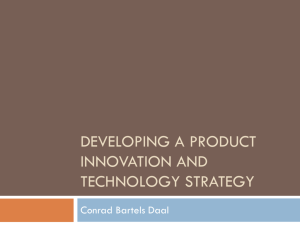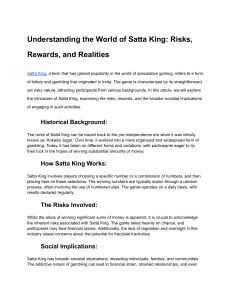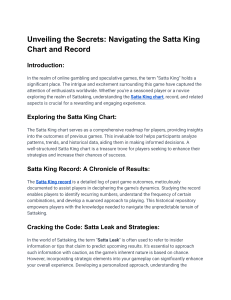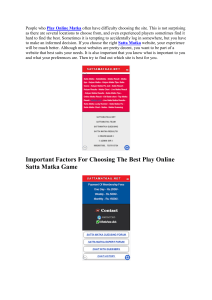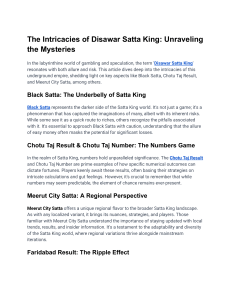Dynamic Business Planning
advertisement
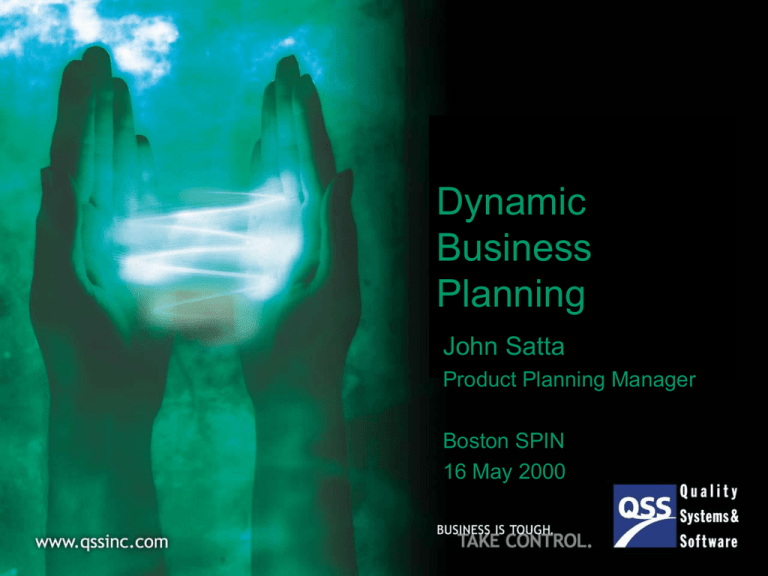
Dynamic Business Planning John Satta Product Planning Manager Boston SPIN 16 May 2000 QSS’ business We help companies meet their business objectives through integrated planning, building and buying of strategic products, systems and software Copyright Quality Systems & Software 2 What are the challenges? Rapidly changing markets demand quick response More stakeholders participate in strategic decisions Increased need for customer focus Complex demands on internal resources Quickly evolving technologies Survival demands visibility Copyright Quality Systems & Software 3 Responses The planning process must be continual, not periodic Use dynamic planning to communicate across the organization Get (and keep) stakeholders involved Plan for change in the face of uncertainty Practical considerations and pitfalls to avoid Copyright Quality Systems & Software 4 Planning must be continual Most planning efforts are fantastic not based on reality wishful thinking ignore the fact of changing environments Example: the annual budgeting process an annual “game” wastes resources justify foregone conclusions Reference: Gartner Group Insider Article Sept 1999 Rapidly changing conditions demand frequent course corrections Copyright Quality Systems & Software 5 Traditional strategic management • Management team has limited visibility into results Business Objectives • Business objectives not clearly linked to strategic initiatives e-mail, informal discussions, meetings, documents, presentations, etc. Cross-functional Strategic Initiative Team • Teams are forced to work with limited navigation • Islands of information Document Corporate Management Communications Presentation Development Project Management Copyright Quality Systems & Software • Isolated teams using independent tools 6 All efforts are global and interrelated Supplier 1 Technology 1 Technology 2 Supplier 2 Opportunity 1 Project 1 Competitor 2 Project 2 Opportunity 2 Project 3 Opportunity 3 Research Competitor 1 Copyright Quality Systems & Software 7 Planning as communication Vision and direction should be set at the top based on reality Changing conditions are an opportunity: to reassure that we are aware of reality to communicate how we are responding to solicit input and feedback Everyone should know the plan and their contribution to it Copyright Quality Systems & Software 8 Top down meets bottom up Vision Wisdom Knowledge Information Data Copyright Quality Systems & Software 9 Characteristics of Outstanding Leaders Establish an encompassing, articulated direction for the organization Set the working agenda and focus the organization’s attention and effort Personal commitment to leading the change Teach knowledge and skills throughout the ranks Wholesale empowerment of their people Portfolio Management for New Products Cooper & Edgett Copyright Quality Systems & Software 10 Involve stakeholders Publish the plans piques curiosity Given enough eyeballs, Keep them up to date almost every problem will be characterized quickly inspires confidence and the fix obvious Actively solicit feedback to someone generates interest Listen to the feedback The Cathedral and the Bazaar Eric S. Raymond that’s how you inject REALITY Quickly respond to the feedback increases confidence, engenders more feedback Copyright Quality Systems & Software 11 For each product, initiative and project Development and availability timelines Business objectives Opportunities Current status Future projections Competitive situation Internal dependencies Supplier dependencies Copyright Quality Systems & Software 12 Planning in the face of uncertainty How does one really “expect the unexpected”? If you don’t consider the possibilities, you’re relying on luck Compare alternate scenarios status quo conditions get worse conditions improve The end result is not a picture of tomorrow, but better decisions about the future The Art of the Long View Peter Schwartz Copyright Quality Systems & Software 13 We must plan for changing conditions Technology Newer Technology Project Project Copyright Quality Systems & Software 14 Balance planning and action Conventional Ideal Guesswork ready, aim, aim, aim, aim... Consider the unthinkable to be able to react rapidly Successive approximation ready, fire, aim Analysis paralysis ready, aim, fire ready, aim, fire, aim, fire, aim, fire... Rapid reaction ready, fire, aim, fire, aim, fire, aim, fire... Copyright Quality Systems & Software 15 Practical considerations Consistent terminology Start small Get buy-in nothing succeeds like success, even modest success Be prepared to sell and re-sell and sell again Have plans start-up, roll-out, maintenance gathering the information is no small feat Develop processes Don’t under-estimate the effort It is a lot of work, but consider the alternative 16 Copyright Quality Systems & Software Pitfalls to avoid Aversion to change “Not invented here” Intellectual honesty is in short supply No Excuses Management by TJ Rodgers et al • No Secrets • No Surprises • No Politics • No Distractions • No Confusion • No Waste • No Illusions Copyright Quality Systems & Software 17 PDMA-reported portfolio problems Pipeline overload Resource allocation No priorities Indecision Slow development Changing direction Copyright Quality Systems & Software 18 Obstacles to success Ignorance Lack of skills Faulty or mis-applied processes Over confidence A lack of discipline and/or leadership Big hurry Gridlock we’re in a rush, so we cut corners. too many projects not enough resources to get the job done right Absence of clarity regarding roles and responsibilities Copyright Quality Systems & Software 19 Case study: Motorola Communications Enterprise Adopting enterprise-wide planning to: Accelerate time to market Ensure quality of products and services through increased attention to customer needs Sharpen focus on technology developments and competition Optimize use of resources Users Strategic planners Facilitators Product planners Brand managers Forecasters Developers and engineers “Provides the enterprise with 10x-100x improvement in operational efficiency” Copyright Quality Systems & Software 20 Case study: Motorola Communications Enterprise 50 Motorola’s Forecasted Adoption Rate of Enterprise-wide planning 32,000 users 40 30 20 10 1,000 users 1999 2000 2001 Copyright Quality Systems & Software 2002 21 Multi-enterprise collaboration Enterprise C Visibility into others’ plans... Enterprise B Enterprise A Customer of B enables precision responses Supplier to B Copyright Quality Systems & Software 22 Interesting Statistics 50% of all new product development projects fail 99% of all ‘corner office’ initiated new product development projects fail 30-50% of largest companies make revenues on products developed in the last 3-5 years Portfolio Management for New Products Cooper & Edgett Copyright Quality Systems & Software 23 Make the Success Factors More Visible Leaders must lead Review and overhaul your processes Define standards of performance expected Build in tough go/kill decision points with defined criteria Use true cross functional teams Train continually Reduce cycle times, but don’t become a speed freak Reduce the number of projects underway Copyright Quality Systems & Software 24 References Mentioned john_satta@qssinc.com www.qssinc.com Inside Gartner Group newsletter www.gartner.com The Art of the Long View - Peter Schwartz The Cathedral and the Bazaar - Eric S. Raymond No Excuses Management - TJ Rodgers et al Product Development & Management Association www.pdma.org Portfolio Management for New Products - Cooper & Edgett Others Built to Last - Collins and Porras Competing for the Future - Hamel and Prahalad Copyright Quality Systems & Software 25 The results... Improved business information: Understand where to invest: What are our key technologies? What are our major dependencies? What are our core strengths? What are our critical weaknesses? Integrated planning: Think globally Are we researching the technologies we are going to need? Are we co-ordinating with our suppliers? Are we co-ordinating with our customers? Proactively plan for all conditions Copyright Quality Systems & Software 26 Questions...?
